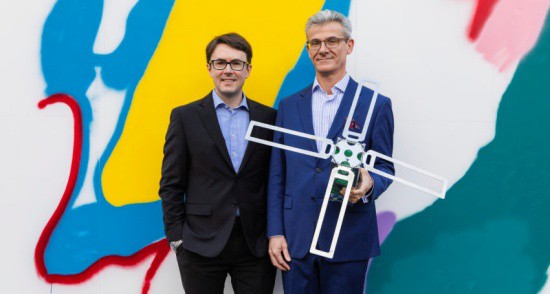Satellite communications business Myriota and telecommunications company Optus Business have joined forces to bolster Internet of Things coverage across regional Australia.
In a statement released yesterday, Myriota said the telco-nanosatellite agreement would offer low-cost, long battery life connectivity for millions of devices across multiple industries by combining Optus’ national networks and digital enablement capabilities with Myriota’s direct-to-orbit technology.
Myriota CEO and co-founder Dr. Alex Grant said the company was already trialling the partnership with Optus customers and expected to continue onboarding customers.
“That’s all going well, and we expect this to ramp up significantly over the coming months,” Grant said.
A niche in nanosatellite IoT
The announcement follows a productive year for Myriota, which has become a global leader in nanosatellite Internet of Things (IoT) connectivity and is based at Lot Fourteen – an innovation precinct in the CBD of Adelaide, South Australia.
Earlier this month, the South Australian company announced a partnership with Queensland AgTech business Goanna Ag to unlock the power of remote monitoring, and in July the Adelaide start-up became the first to pen a statement of strategic intent with the Australian Space Agency.
A wide range of IoT applications
Grant said the latest collaboration would unlock new opportunities for IoT applications across a wide range of industries.
“Remote connectivity has long been the missing piece of the puzzle for IoT across industries like logistics and farming, and we are thrilled to partner with Optus Business to provide a comprehensive connectivity offering,” Grant said.
“Previously, satellite connectivity has not been available or affordable for businesses with remote assets, but nanosatellites are providing a more attainable and affordable solution.
“By combining Optus’ national networks with our nanosatellite capability, we are able to offer a truly holistic IoT solution and help solve connectivity issues being faced in regional Australia.”
Spun out of the University of South Australia in 2015, Myriota last year raised AU$15 million through a Series A funding round from companies including the venture capital arm of Optus’ parent company Singtel.
“What this allows us to do together is bring Myriota products and services to market as part of a broader context of technology solutions to solve problems in Internet of Things deployment across Australia,” Dr Grant said.
“With Myriota direct-to-orbit Internet of Things connectivity we can provide connectivity for IoT that works outside the areas of cellular footprint, which extends reach.
“Also offering an alternative carrier alongside things like 4G, 5G or narrowband IoT with very, very low power use. So, that’s advantageous sometimes to have a mix of technologies, where different technologies are doing different things.”
Optus Business managing director Chris Mitchell said he was excited to see the impact that collaborating with Myriota would have for Optus customers.
“Working with innovative start-ups like Myriota allows Optus Business to help our customers capture the business improvements of next generation technologies,” Mitchell said.
South Australia has been a significant player in the nation’s space industry and is home to the Australian Space Agency and several other space start-ups, including Fleet Space Technologies and Inovor Technologies, both of which have announced IoT initiatives this year.
In April, the A$245 million the Cooperative Research Centre for Smart Satellite Technologies and Analytics (SmartSat CRC) was awarded to the University of South Australia. The unprecedented funding for advanced telecommunications and intelligent satellite systems makes the SmartSat CRC the biggest space industry research collaboration in Australian history.
SmartSat CRC will focus on advanced communications, intelligent satellite systems and next generation earth observation sensor technologies and analytics. It is seeking international companies in need of satellite solutions to their problems.
This article is originally published in The Lead of South Australia.



